#Researcher S's recovery
Explore tagged Tumblr posts
Text
Notes- Blabber Mouth; Cryo Men x gn!Reader
Return to File
Recovery date: February 3rd, 2025
Description: A Cryo version of Blabber Mouth, including Capitano
Notes: CW Wrio and Kaeya's parental fears, accidental pregnancies Reader can carry children but no pronouns are used.
Hydro Dendro Cryo Pyro Anemo Electro Geo
Back to directory

Wriothesley
He’d considered having kids before meeting you, but it was always accompanied by a bit of a crisis
When you sit down to talk about having kids, it is also accompanied by a crisis
Eventually, he decides he wants a kid and that he can do that as long as you’re by his side
There’s a lot of worrying, and a lot of work to be done but in the end it’s fine
He holds your first born and the world is perfect, he doesn’t think it could get anymore perfect
Sigewinne and you are the first to know, you go to her the second you have an inkling because if you are pregnant there is a lot of planning to be done
You and Wriothesley had been talking about moving to the surface more permanently, and if you were pregnant again that might affect those plans
You get home, planning to tell Wrio that night and your kid runs up to you and plants a kiss on your stomach
Wrio laughs as he comes over and wraps his arms around you, telling you that your kid had told him
You’re flabbergasted because you just found out
They’d been reading a kids book about babies and your kid had made the connection
Wrio hold you and your first born close that night, thank you for your perfect little life
You do end up getting a place in the city near the fortress so that Wrio can come home more frequently
Kaeya
Always thought he never wanted kids
Thought he didn’t deserve them after what happened between him and Diluc
But you changed his mind, and because of that he’s the one to bring up having kids
He tries to mend his relationship with Diluc too, offering him the role of godfather for your first born
He’s perfectly fine with one, it’s a learning experience that he wants to take his time with
But sometimes he remembers what it was like growing up with Diluc, and he suggests you two… don’t not try?
You laugh at his wording but agree
It takes a while, but one day Kaeya and your kid come home with two stuffed animals
Kaeya has this smug look on his face as your kid gives you one of them
You ask if it’s a gift for you, rhetorically, and your kid says it’s for the baby
You short circuit and Kaeya just laughs, urging your kid to go put their new plushy away
He wraps his arms around you and ask if you really didn’t know
You’re both super happy, and so is your first born
Capitano/Thrain
Pre-the fall of Khaenri’ah because post he’s too busy to even consider kids… also trauma
He’s hesitant to have kids, he wants them but his service to the people is important to him
You getting pregnant with your first is an accident
But he wouldn’t do anything different, except maybe being there for the birth
There is a conversation about having another as your first born gets older, he doesn’t leave on missions as often but when he does it’s for longer periods of time
It’s one of the rare short missions when you find out you’re pregnant with your second
And, you’re a little worried when you find out because he’d just left and you didn’t know when he’d be back
So you keep it to yourself, but your kid likes laying their head on your stomach more which you assume is because they can sense your worry
He comes home to find you cuddled up on the couch reading your kid a book
And your kid, half asleep says something about dad being home and it’s clearly not directed at you guys
He’s kind of caught off guard and you tell him you just found out
This time, he has the power to take shorter missions and stay with you as your due date approaches
#researcher s's recovery#genshin impact#genshin impact wriothesley#wriothesley#wriothesley x reader#genshin impact kaeya#kaeya alberich#kaeya x reader#genshin impact capitano#genshin impact thrain#capitano x reader#thrain x reader#x reader#gender neutral reader#genshin impact headcanons#fluff
187 notes
·
View notes
Text
in the medically discharged soap au im working on i wanna make him have dysautonomia. like he loses his left leg below the knee thats gotta fuck with your ans somehow. plus i have dysautonomia and i think the way it interacts with the pns and sns would be cool to explore not cool but like good?? not good its bad but like i want to inflict pain and having a disorder that makes your autonomic nervous system suck paired with ptsd which makes your nervous system hyperactive theres gotta be something there. does this make sense? i probably need to write this down in a clear way before i actually implement it into the story
#and do more research on losing a limb#ive got the recovery time and general process written down for it#but none of the various complications that come with it#i will find a way to give soap dysautonomia#i think i could definitely give him oh and it work well as a complication#do you guys think i could text my cardiologist and neurologist and be like heyyy wanna give me a crash course for a fanfic#LOL#fuck im imaginging that now#they’re both late 20’s early 30’s they definitely know what fanfiction is#soap cod#john soap mactavish#soap call of duty#fic rambles#medically discharged soap au
13 notes
·
View notes
Text
Our Ongoing Anti-American Revolution!
Yes, ladies and Gentlemen it is a cabal of China, Russia, North Korea, Iran and its Islamic Jihadist proxies all working diligently to destroy our United States of America. I have long tried to explain this to my readers on this blog. President Trump and his administration are doing their best to disrupt and weaken this ongoing insurrection aided, abetted, and accelerated by our own massively…
#America&039;s decline#America&039;s Recovery#Anti-American Revolution#Brian Mauro#Capital Research#Corrupt Democrat Party#Need Literary Agent#V. Thomas Mawhinney Ph.D.
0 notes
Text
Anyway. As always, shout out to Crazy Ex-Girlfriend for deconstructing the idea of Romance As A Singular Saving Force in a way that excellently balanced humor, serious discussion, complex character work, and a mastery of musical elements. Show of all time.
#mc13's routine cxgf media breakdown#like...the central and most dynamic relationship being a friendship between a younger and older woman?#a diverse cast that never felt like it was diverse for the sake of Looking Progressive but because diversity is a reflection of reality?#to this day the most emotionally-resonant portrayal of bisexuality I've seen onscreen??#a love letter to the power of art and the catharsis of Being A Theatre Kid???#portraying recovery as a complicated non-linear experience?????#ACTUALLY DOING THE RESEARCH REGARDING THE MENTAL ILLNESS THE PROTAGONIST GOT DIAGNOSED WITH???????????
0 notes
Text
So. I've Cracked The Code On The Appearance Changes in Side Order.
Wall of photos and such incoming.
After a lot of testing, I've discovered there are 7 different little lights and doodads that are added to Agent 8 via upgrading certain chips, each with a basic 1st tier and and upgraded 2nd tier. The 1st tier of upgrades appear after picking up two of the same chips in that changes pool (ex: 2 Homing Shots chips), with the 2nd tier appearing after picking up five of them (ex: 5 Homing Shot chips). There is no further visual indicators added for maxing chips that go beyond 5, such as Splash Damage or Rush Attack.
Full disclaimer: This is the result of researching a LOT of my own runs, so I can say this is true with about 95% certainty. If I labeled an ability chip in the wrong visual pool, please let me know!

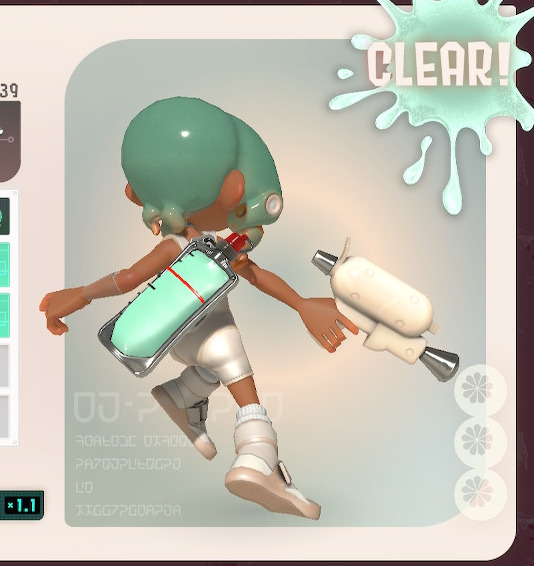
Let's start with the basics - our control group. No Teal upgrades provide any visible changes to Agent 8 (or Pearl-bot for that matter), so I ran an all-teal palette to demonstrate.
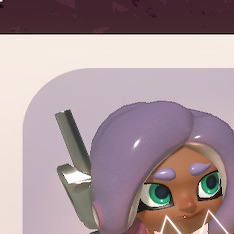

First is likely one of the more requested visual changes - the Headset. The 1st tier sports a basic metallic earpiece, with the 2nd adding an antenna and eyepiece that match your primary ink color.
Maxing Splash Damage, Sound Wave Damage, Splash Radius, Special Charge Up, Turf Lucky Chain, Rush Knockback, and Homing Shots all provide the headset!
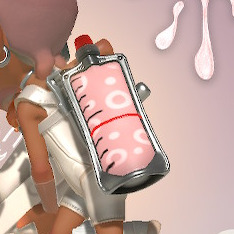
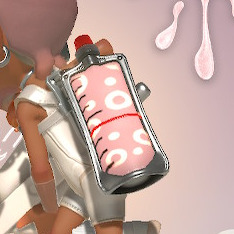
Next up is Ink Bubbles. The 1st tier shows transparent, slower bubbles flowing in 8's ink tank, with the bubbles being faster and more opaque in the 2nd tier.
Nabbing Poison Ink, Splat Ink Recovery, Ink Saver Sub, Ink Recovery Rate, Sticky Ink, and Explosion Knockback all provide Ink Bubbles.
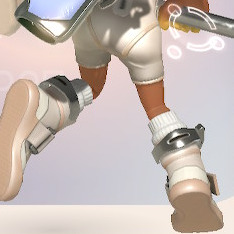

Following that is the Fins. The 1st tier shows the base shackles being added to 8's boots, with the fins themselves being added for the 2nd tier.
Picking up Run Speed, Swim Speed, Rush Attack, Mobile Ink Recovery, Mobile Special Charge, and Mobile Drone Gauge all provide the Fins.
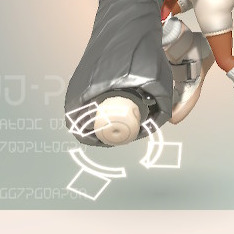
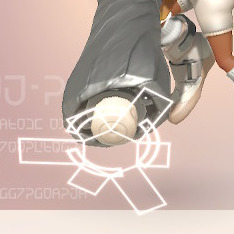
Now, moving on to the weapon upgrades!
First we have the Muzzle Lights, which appear at the muzzle of most weapons, and the sides of the brush and roller nearest the base. The 1st tier shows a circle and squares circling around the muzzle, with the 2nd tier being more exaggerated, with alternating squares and rectangles forming a hexagon pattern in the center.
These are exclusive to the Ink Damage, Main Damage (Close), and Main Damage (Distant) chips.
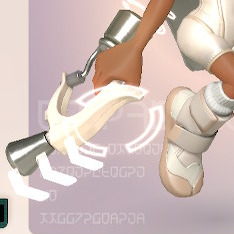
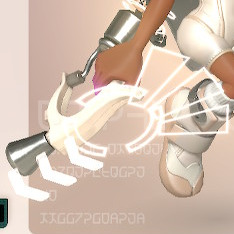
Next up is likely the most common visual one can see on their run - the Arrows. The 1st tier shows a circle with three arrows pointing down the weapon, with the 2nd tier adding some blowback markers behind the circle.
These are on a whopping TEN upgrades, being Splatling Barrage, Main Firing Speed, Horizontal Slash Speed, Main Range, Main Piercing, Main Ink Coverage, Rush Ink Coverage, Quick Charge, Shot Spread Reduction, and Ink Saver Main.

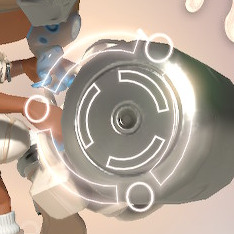
Last of the weapon upgrades are the Dots. The 1st tier is 3 large dots and a circle spinning at the bottom of your weapon or around your wrist, with the 2nd tier adding another circle around the dots.
These can be found on the Hindrance Damage, Ink Attack Size, Charge Storage, Moving Ink Speed, Extra Dodge Roll, Brella Cooldown, and Knockback upgrades.
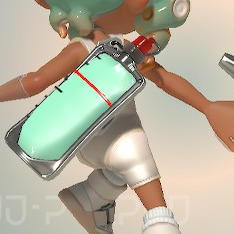

And finally, my favorite little knick-knack, the Shrimp Hook. This little guy appears on your ink tank after picking up 2 matching Luck upgrades (ex: Lucky Bomb Drop, Canned Special Drop, etc), and begins to glow after picking up 5. However, the glowing effect is not visible in the post-game screen. 😔 (I would totally buy one of these if someone made one, btw)
By the way, 7 visual upgrades * 5 chips needed to max each visual is 35 chips, which is just shy of the 36 total chips you can have on one palette, which means, in theory, you could. Have every maxed visual indicator on in one run.
Just a thought. : )
#splatoon#splatoon 3#side order#side order spoilers#agent 8#long post#sorry i have side order brainrot#look at my research boy
5K notes
·
View notes
Text
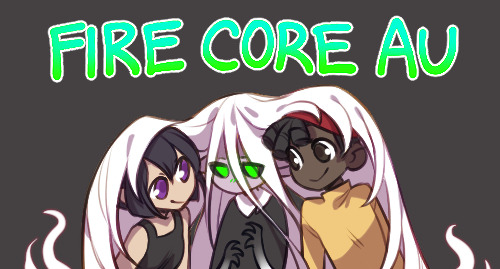
I’ve gotten a WAVE of asks about this AU, so I decided to flesh it out some more and answer some of those questions!
I’ll probably polish this extended summary up at some point and submit it to AO3. But for now, here’s a rundown of my thoughts–please feel free to send more questions! I’ll update this post if I get any more. But if you’re someone who wanted to write fic for it, don’t worry, you don’t need to take my headcanons as gospel. It’s a pretty basic AU honestly lol
Summary:
The portal accident results in a violent explosion that wipes out the whole block, and condemns all of Amity Park. Danny haunts the city for 100 years, before Sam and Tucker find him.
Setup:
In the 1920’s, 19-year-old Danny went into the incomplete portal on his own, hoping to help out his parents. Ripping the portal open through unnatural means created a huge burst of energy that resulted in a massive explosion. A good portion of the Amity Park population died, many were injured, and the ones on the fringes relocated–Amity was quickly deemed too dangerous due to the excess ectoplasm in the area that attracted ghosts.
While the disaster was in Amity, the fallout was seen around the globe. Before, natural portals were rare, short-lived, and rarely allowed ghosts to fully slip into our realm (the most severe cases being on par with poltergeists that most people didn’t believe in). Now, natural portals pop open frequently around the world, large enough to allow the entirety of a ghost into the physical plane. They’re more common the closer you get to Amity, but they happen enough elsewhere that this change was something of a small apocalypse before people settled back down and found out how to combat at least some of their new, permanent neighbors.
Danny is unaware that he’s only half-dead, believing he’s a full ghost. He ends up sticking around Amity, unintentionally making it his haunt. His grief and guilt over causing the death of his loved ones (and many others) makes him isolate and avoid human contact. Though he has, at times, scared nosy people away from the city in a mix of territorial instinct–and to get them to leave before a less friendly ghost finds them.
Ghosts are much more of an uncontested danger in this AU. Lesser ghosts are practically mindless, and while stronger ghosts are capable of reason, their interests are limited. They’re highly territorial, possessive, and often destructive. Most worrisome is that they also like to snack on the life force of anything alive. No one is sure what dictates a ghost’s propensity to attack or hunt the living for their life force since ghosts don’t exactly experience hunger. At least, not the way we do. If a human is rescued before their life force is fully drained, they can make a full recovery–though humanity has still not yet found what this “life force" is.
And since the Fentons’ research died along with them, there aren’t many tools available to the public to protect them from ghosts. Most homes have standard ghost shields and some weapons are available on the market, but certified ghost hunters are required to take care of anything more powerful than your average spook.
Sam and Tucker met in high school, and are now rooming together for college very close to the Amity border. Rent is surprisingly cheap when you’re a stone’s throw away from a condemned area crawling with ghosts. Sam is the one who drags Tucker along with her fascination over finding out more about the city, and its largely mysterious demise. Sam is aware of the danger, but feels ghosts have a place in this world just like everything else, and does exercise caution–like one would while foraging in the woods with a known tiger population.
What she and Tucker weren’t expecting was to run into a ghost that felt almost human. One that hasn't hurt them, not for lack of trying–while being powerful enough to walk past ghost shields without so much as a flinch. The long white hair is familiar in the whispers of the ectobiologist community, but there’s no way it could be the rumored ghost king Phantom, right?
About Danny:
He has very long hair, claws, and black sclera. His hazmat suit is more torn and ragged, with exposed hands and feet that fade into a burnt black.
His hair tends to float a lot on its own. It can start morphing into fire under duress.
He does still technically have gloves and boots, they've just charred and melted into his skin towards the ends. He can't take them off in his ghost form. His hands and feet have a leathery texture that's tougher than the rest of his skin.
The white of his hazmat suit is both supposed to look like flames, and also a battered look representing his more violent, explosive death.
Overall, he appears rather listless and sad, with an unnerving air of danger around him–even for a ghost.
Danny’s “ghost sense” comes out as white smoke.
He does breathe black smoke at times, usually when agitated.
He's already fought and defeated Pariah Dark by the time Sam and Tucker find him, technically making him the Ghost King. This is heavily speculated by ghost experts, despite there being no real proof beyond a massive battle that scarred Illinois. He has not donned the Ring or the Crown, and captured sentient ghosts are hesitant to answer questions surrounding him. Danny basically has the throne but doesn’t do anything with it, and finds it meaningless enough to routinely forget he has the title. He only fought Pariah because he knew otherwise, humanity would have perished. A lot of ghosts are scared of him because he's so hard to figure out, and he's strong.
Danny is usually very quiet and speaks softly, because his lungs were damaged in the blaze that half-killed him. He's technically healed since becoming a ghost, so it's more of a compulsion due to the traumatic memory. That, and he’s just… very forlorn and distant, shy around humans who don’t seem to understand how dangerous it is to keep hanging around him.
His memories pre-accident are extremely fuzzy. He knows the very basics of who he was, but specifics have been muffled due to trauma and isolation. He routinely forgets human habits, etiquette, etc. and tends to act more like a full ghost with some odd quirks.
He does try to scare Sam and Tucker off numerous times. Unfortunately for him, they realized they shouldn't have been able to escape a ghost that strong–but they did, because he let them.
Sam and Tucker think he's mute at first! He doesn't speak a word to them until several encounters later, when he fumbles his whole scary act and saves them from another ghost.
He’s still half-ghost, though he doesn’t figure this out until Sam and Tucker come along trying to unravel the mysteries behind the Amity catastrophe. Physically and emotionally, he’s been stuck for 100 years–so his human form is still 19. It’s unclear at this point if he can age normally like a human as long as he stays in human form, or if he’s immortal.
Danny's family did not turn into ghosts, though he sometimes worries he'll find them in the afterlife as shells of their former selves. He doesn't know if it's better or worse that he's not sure he'd recognize them.
(Danny also still has some living family. Take a guess.)
Yes, he knows how to Wail. Understandably, he very rarely uses it. You do not want to witness this.
Danny :) is not immune :) from the allure of eating a human's life force :)))
#danny phantom#au#zilly art#I just wanted to draw a boy with long hair and claws how did this happen#fire core au
4K notes
·
View notes
Text
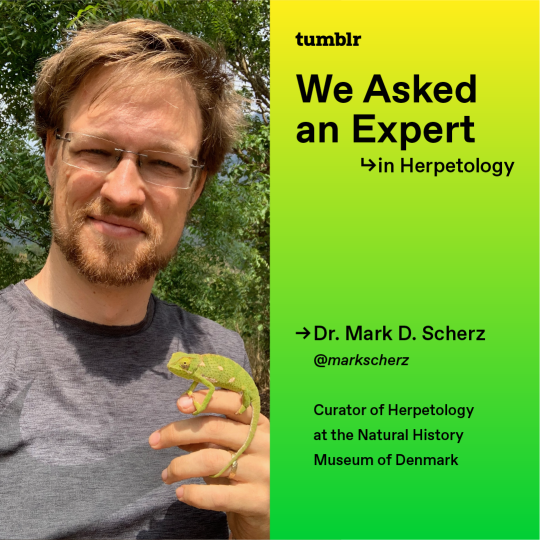
We Asked an Expert...in Herpetology!
People on Tumblr come from all walks of life and all areas of expertise to grace our dashboards with paragraphs and photographs of the things they want to share with the world. Whether it's an artist uploading their speed art, a fanfic writer posting their WIPs, a language expert expounding on the origin of a specific word, or a historian ready to lay down the secrets of Ea-nasir, the hallways of Tumblr are filled with specialists sharing their knowledge with the world. We Asked an Expert is a deep dive into those expert brains on tumblr dot com. Today, we’re talking to Dr. Mark D. Scherz (@markscherz), an expert in Herpetology. Read on for some ribbeting frog facts, including what kind of frog the viral frog bread may be based on.
Reptiles v Amphibians. You have to choose one.
In a battle for my heart, I think amphibians beat out the reptiles. There is just something incredibly good about beholding a nice plump frog.
In a battle to the death, I have to give it to the reptiles—the number of reptiles that eat amphibians far, far outstrips the number of amphibians that eat reptiles.
In terms of ecological importance, I would give it to the amphibians again, though. Okay, reptiles may keep some insects and rodents in check, but many amphibians live a dual life, starting as herbivores and graduating to carnivory after metamorphosis, and as adults they are critical for keeping mosquitos and other pest insects in check.
What is the most recent exciting fact you discovered about herps?
This doesn’t really answer your question, but did you know that tadpole arms usually develop inside the body and later burst through the body wall fully formed? I learned about this as a Master’s student many years ago, but it still blows my mind. What’s curious is that this apparently does not happen in some of the species of frogs that don’t have tadpoles—oh yeah, like a third of all frogs or something don’t have free-living tadpoles; crazy, right? They just develop forelimbs on the outside of the body like all other four-legged beasties. But this has only really been examined in a couple species, so there is just so much we don’t know about development, especially in direct-developing frogs. Like, how the hell does it just… swap from chest-burster to ‘normal’ limb development? Is that the recovery of the ancestral programming, or is it newly generated? When in frog evolution did the chest-burster mode even evolve?
How can people contribute to conservation efforts for their local herps?
You can get involved with your local herpetological societies if they exist—and they probably do, as herpetologists are everywhere. You can upload observations of animals to iNaturalist, where you can get them identified while also contributing to datasets on species distribution and annual activity used by research scientists.
You can see if there are local conservation organizations that are doing any work locally, and if you find they are not, then you can get involved to try to get them started. For example, if you notice areas of particularly frequent roadkill, talking to your local council or national or local conservation organizations can get things like rescue programs or road protectors set up. You should also make sure you travel carefully and responsibly. Carefully wash and disinfect your hiking boots, especially between locations, as you do not want to be carrying chytrid or other nasty infectious diseases across the world, where they can cause population collapses and extinctions.
Here are some recent headlines. Quick question, what the frog is going on in the frog world?
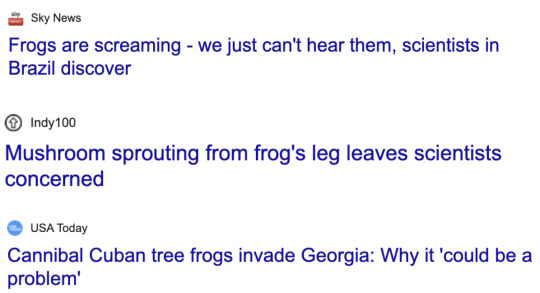
Click through for Mark’s response to these absolutely wild headlines, more about his day-to-day job, his opinion on frog bread, and his favorite Tumblr.
✨D I S C O V E R Y✨
There are more people on Earth than ever before, with the most incredible technology that advances daily at their disposal, and they disperse that knowledge instantly. That means more eyes and ears observing, recording, and sharing than ever before. And so we are making big new discoveries all the time, and are able to document them and reach huge audiences with them.
That being said, these headlines also showcase how bad some media reporting has gotten. The frogs that scream actually scream mostly in the audible range—they just have harmonics that stretch up into ultrasound. So, we can hear them scream, we just can’t hear all of it. Because the harmonics are just multiples of the fundamental, they would anyway only add to the overall ‘quality’ of the sound, not anything different. The mushroom was sprouting from the flank of the frog, and scientists are not really worried about it because this is not how parasitic fungi work, and this is probably a very weird fluke. And finally, the Cuban tree frogs (Osteocephalus septentrionalis) are not really cannibals per se; they are just generalist predators who will just as happily eat a frog as they will a grasshopper, but the frogs they are eating are usually other species. People seem to forget that cannibalism is, by definition, within a species. The fact that they are generalist predators makes them a much bigger problem than if they were cannibals—a cannibal would actually kind of keep itself in check, which would be useful. The press just uses this to get people’s hackles up because Westerners are often equal parts disgusted and fascinated by cannibalism.
What does an average day look like for the curator of herpetology at the Natural History Museum of Denmark?
No two days are the same, and that is one of the joys of the job. I could spend a whole day in meetings, where we might be discussing anything from which budget is going to pay for 1000 magnets to how we could attract big research funding, to what a label is going to say in our new museum exhibits (we are in the process of building a new museum). Equally, I might spend a day accompanying or facilitating a visitor dissecting a crocodile or photographing a hundred snakes. Or it might be divided into one-hour segments that cover a full spectrum: working with one of my students on a project, training volunteers in the collection, hunting down a lizard that someone wants to borrow from the museum, working on one of a dozen research projects of my own, writing funding proposals, or teaching classes. It is a job with a great deal of freedom, which really suits my work style and brain.
Oh yeah, and then every now and then, I get to go to the field and spend anywhere from a couple of weeks to several months tracking down reptiles and amphibians, usually in the rainforest. These are also work days—with work conditions you couldn’t sell to anyone: 18-hour work days, no weekends, no real rest, uncomfortable living conditions, sometimes dangerous locations or working conditions, field kitchen with limited options, and more leeches and other biting beasties than most health and welfare officers would tolerate—but the reward is the opportunity to make new discoveries and observations, collect critical data, and the privilege of getting to be in some of the most beautiful and biodiverse places left on the planet. So, I am humbled by the fact that I have the privilege and opportunity to undertake such expeditions, and grateful for the incredible teams I collaborate with that make all of this work—from the museum to the field—possible.
The Tibetan Blackbird is also known as Turdus maximus. What’s your favorite chortle-inducing scientific name in the world of herpetology?
Among reptiles and amphibians, there aren’t actually that many to choose from, but I must give great credit to my friend Oliver Hawlitschek and his team, who named the snake Lycodryas cococola, which actually means ‘Coco dweller’ in Latin, referring to its occurrence in coconut trees. When we were naming Mini mum, Mini scule, and Mini ature, I was inspired by the incredible list that Mark Isaac has compiled of punning species names, particularly by the extinct parrot Vini vidivici, and the beetles Gelae baen, Gelae belae, Gelae donut, Gelae fish, and Gelae rol. I have known about these since high school, and it has always been my ambition to get a species on this list.
If you were a frog, what frog would you be and why?
I think I would be a Phasmahyla because they’re weird and awkward, long-limbed, and look like they’re wearing glasses. As a 186 cm (6’3) glasses-wearing human with no coordination, they quite resonate with me.
Please rate this frog bread from 1/10. Can you tell us what frog it represents?
With the arms inside the body cavity like that, it can basically only be a brevicipitid rain frog. The roundness of the body fits, too. I’d say probably Breviceps macrops (or should I say Breadviceps?) based on those big eyes. 7/10, a little on the bumpy side and missing a finger and at least one toe.
Please follow Dr. Mark Scherz at @markscherz for even more incredibly educational, entertaining, and meaningful resources in the world of reptiles and amphibians.
2K notes
·
View notes
Text

HOW BATBOYS TAKE CARE OF SICK!READER ── .✦
a/n: this was requested by a anon (here) I hope they get better though but Lowkey flu season is kinda in but I haven’t gotten a fever or flu or cold all year surprisingly but last time this time around my birthday I was in bed because of the same flu too 😭
(Tags: batboys x sick!reader)


BRUCE WAYNE ── .✦
Response: Bruce is not the type to show a lot of outward emotion, but when it comes to his S/O being sick, he’s all business. He’ll immediately take control of the situation.
What He Does: He makes sure you have all the proper medicine, checks with the best doctors in Gotham, and ensures that you rest. You’ll wake up to a tray with hot tea, some soup, and a blanket tucked in around you.
Care Style: He’s quiet but thoughtful. He’ll check your temperature often and make sure you’re hydrated. He may even work late into the night, but he’ll sneak into your room occasionally to check on you.
Humor: If you’re extra strong and act like your not sick, he might raise an eyebrow and make a deadpan joke about how you’re not allowed to go vigilante when sick.
“I didn’t take you for a hero when you’re running a fever, but I’ll make sure to add it to your file.”
DICK GRAYSON ── .✦
Response: Dick is the opposite of Bruce when it comes to showing his care. He’s incredibly affectionate and wants to make you as comfortable as possible.
What He Does: He’ll keep a stash of your favorite comfort foods and drinks on hand. You’ll find him sitting by your side, doing anything to cheer you up. He might even bring in a portable DVD player or set up your favorite show, just to keep you entertained.
Care Style: He’s a nurturing caretaker. Dick is constantly checking in with you, holding your hand, and making sure you’re feeling okay. He might even tell you stories to distract you from how miserable you feel.
Humor: His humor comes out when you’re feeling better. He might tease you about how dramatic you were when you had to stay in bed.
“I know you're sick, but I think you might have been faking it with that ‘I’m dying’ act. I’m pretty sure I’m more dramatic than you.”
JASON TODD ── .✦
Response: Jason is very protective, especially when you’re sick. His initial reaction will be pure panic (he's not a fan of seeing you vulnerable), but he quickly shifts into overdrive mode, focusing on getting you comfortable.
What He Does: He’ll get super practical: medicine, blankets, food, making sure you’re hydrated, and then he’ll sit with you, watching over you. He’s not one to baby you too much, but he’ll definitely make sure you’re pampered.
Care Style: Jason can be tough and blunt, but when you're sick, he’s extremely attentive. He’ll help you with everything from bringing food to checking on your temperature, and he’ll hover over you with little complaints, even if he’s clearly trying to hide his concern.
Humor: Jason’s humor is very dry when you’re sick. He’ll joke about you using the flu as an excuse to avoid doing anything.
“Not like you’d be any help with the bad guys while you’re over here acting like you’re on your deathbed.”
“I’m dying, Jason!”
“I’m still going to make you soup, but you better make a full recovery before I let you get dramatic again.”
TIM DRAKE ── .✦
Response: Tim is a caretaker by nature, and if you’re sick, he’s going into full research mode. Expect him to be the most methodical about it, making sure you get the best medicine and a recovery plan.
What He Does: Tim will make sure to check your symptoms, research flu remedies, and put together a detailed plan to make sure you’re as comfortable as possible. You’ll get healthy snacks, warm blankets, and an endless supply of your favorite teas.
Care Style: He’s very hands-on. Tim will likely be the one to prep your medicine doses, change your sheets, and even do some light chores so you can rest. If you need something, he’ll already know what it is.
Humor: Tim’s humor comes out in gentle teasing. He might make fun of how dramatic you’re being, but always in a loving way.
“You’re seriously not going to drink the tea I made? I mean, it’s not like I researched five different remedies or anything.”
DAMIAN WAYNE ── .✦
Response: Damian’s reaction to you being sick is a mix of irritation (because he doesn't like seeing you unwell) and a deep sense of duty. His pride might keep him from outwardly showing how concerned he is, but he’s actually very sweet when he’s worried.
What He Does: He’s the one who will give you strict instructions on how to recover faster, sometimes sounding like a miniature doctor. He might be a little bossy, but it’s coming from a place of wanting you to get better quickly.
Care Style: He’ll keep checking on you, ensuring that you’re resting and following his orders. He might even hold a glass of water up to your mouth, but don’t expect much coddling.
Humor: If you argue with him about taking the medicine or following his advice, he’ll roll his eyes, but there’s a soft spot in him that he won’t admit.
“You are not allowed to leave the bed. You will be much more useful as a fully recovered individual.”
“I’m fine, Damian.”
“No. I will call the League of Assassins to make sure you stay in bed if necessary.”
OVERALL TRAITS FOUND IN THEM ── .✦
Comforting: They’re all deeply caring, but their ways of expressing it vary based on their personality.
Teasing: There’s an element of teasing and dry humor, especially when you’re feeling a little better.
Protectiveness: All of them become especially protective when you’re under the weather. They want you to rest, and while they may not show it, they’re worried about you.
Little Gestures: Whether it’s bringing you tea, sitting quietly with you, or making you laugh, each of them will express their care in unique ways.

#jason todd#jason todd x reader#batboys#dc#dick grayson#red hood x reader#red hood headcanon#red hood imagine#red hood#dick grayson imagine#jason todd headcanon#jason todd imagine#dick grayson x reader#dick grayson headcanon#damian al ghul x reader#damian wayne x reader#damian wayne#damian al ghul#tim drake x reader#tim drake headcanon#tim drake#red robin headcanon#red robin x reader#red robin#dc x reader#dollishmehrayan#dollishbabes#dollish#asks open#asks
681 notes
·
View notes
Text
✈ — weightless paradise
transmigrated non-mc!reader x caleb

prev ch: 02 - experiment┆series masterlist ┆next ch: 04 - helplessness
This isn’t how the game was supposed to go. You're not supposed to be here. You're an anomaly. But if you’re already here, then… can’t you just enjoy it for now? Just for a little while? Before the main story begins? Before everything inevitably falls into place? ...Right?
— content warning/s:
non-consensual medical & scientific experimentation
torture and pain
implied abuse and dehumanization
physical violence and injury (cutting, burning, blunt trauma)
blood and gore
powerlessness and loss of agency
cross-posted on ao3! ٩(ˊᗜˋ*)و ♡
CH. 03 — REGENERATION
You know it’s coming long before they take you.
The way the scientists look at you has changed. The whispers when they pass, the lingering stares through the observation window—it’s been building for days. They’ve been patient. Watching. Waiting.
Today, they’re done waiting.
The guards come for you after morning rations. Caleb’s still chewing on a stale protein bar when they grab your arm. He freezes, his gaze sharpening.
“No,” he says flatly.
One of the guards shoots him a warning look. “Stay out of it.”
Caleb moves anyway, standing before you. His hand catches your wrist, fingers curling tightly.
“You’re not taking them,” he says.
“Let go,” the guard snaps.
Caleb doesn’t. His grip tightens. His eyes burn cold and sharp, something dangerous flickering behind them.
“Hey,” you say quietly. “It’s okay.”
He doesn’t look at you. “No, it’s not.”
The guard’s hand falls to the baton at his side.
“It’s okay,” you repeat, more firmly this time. You pry Caleb’s fingers loose from your wrist. His grip lingers just a second too long.
The guards drag you away.
The room is cold.
They strip you down to the standard medical gown—thin, scratchy fabric that clings to your skin. The table beneath you is hard and metal, straps digging into your wrists and ankles.
“You’re Subject 000,” one of the scientists says, speaking more to his clipboard than to you. “Chronosight.”
You don’t answer.
“We need to test your regenerative capabilities.”
Your breath catches. “What?”
The scientist doesn’t even look at you. “We’ve seen indications of accelerated recovery, but no confirmed data.” He taps his pen against the clipboard. “Today, we’ll be determining the limits.”
Your stomach turns.
Limits.
“What—” Your voice breaks. You swallow hard and try again. “What does that mean?”
The scientist gestures toward one of the assistants. You hear the tray before you see it—metal instruments clattering faintly against one another. Blades. Syringes. Scissors.
Your blood runs cold.
“I don’t…” Your breathing quickens. “I don’t think this is a good idea.”
“It’s necessary,” the scientist says. “For research.”
You flinch as one of the assistants grabs your arm, forcing it flat against the table. Something cold swipes over your skin—alcohol.
“It’s okay,” you tell yourself. “I’ll be fine. It’s okay. It’s okay.”
The scalpel gleams as the assistant lifts it.
The blade sinks into your arm.
The pain is white-hot, sharp enough to steal the breath from your lungs. You barely hear yourself scream. Your body jerks instinctively against the straps. Blood spills across your skin, bright and wet.
It hurts. It hurts. It hurts.
The assistant pulls the blade away. The wound gapes open—too deep, too wide. Blood drips steadily down your arm.
The scientist leans closer, watching. Waiting.
You wait too.
For the pain to fade. For the wound to close. For something—anything—to fix this.
Seconds pass. Your arm still burns.
“It’s not healing,” one of the assistants mutters.
“Wait,” the scientist says.
The pain sharpens, a dull throb radiating through your bones. You squeeze your eyes shut, clutching at the flickering threads of your ability—the tangled web of timelines twisting behind your eyes.
There’s too much. Too many outcomes. Too many paths. None of them end with this not hurting.
Then—slowly—the pain fades.
When you open your eyes, the wound is closing. Flesh knitting back together, skin smoothing over as if nothing happened. Blood still stains your arm, but there’s no sign of the injury.
“She’s stable,” the scientist murmurs. “Accelerated recovery confirmed.”
“Again,” someone says.
The blade returns.
They test burns. Blunt trauma. A puncture wound to your side. Each injury sears through you—sharp, overwhelming, impossible to forget. The worst part isn’t the pain.
It’s knowing they’ll just keep going.
You lose track of how many times it happens—how many times they hurt you, watch you heal, then hurt you again. Your mind swims, flickering in and out of focus. Everything is red and white and wrong.
At some point, the scientist’s voice cuts through the haze.
“That’s enough for today.”
Cold hands unbuckle the straps. You feel yourself being lifted—your body heavy, limbs numb.
You barely remember the walk back.
When you wake up, you’re in your room again.
Your body aches, every nerve still buzzing faintly with pain. The cuts are gone, the burns no longer blistering your skin—but you feel them. The memory of it lingers, crawling beneath your skin.
Something warm presses against your hand.
You turn your head.
Caleb’s sitting beside you. His hair is a mess, his jacket wrinkled like he’s been here for hours. His fingers are wrapped tightly around yours, his knuckles white.
“You’re awake,” he says quietly.
Your voice shakes. “Yeah.”
His grip tightens. His head dips forward, his hair falling over his eyes. He doesn’t say anything for a long time.
“I’m sorry,” he murmurs.
You blink slowly. “For what?”
“For not stopping them.”
His voice is quiet, but there’s something raw beneath it.
You squeeze his hand. “It’s not your fault.”
His fingers twitch against yours. “It should’ve been me.”
“It shouldn’t have been anyone,” you say.
He doesn’t answer.
The silence stretches between you, thin and fragile.
Finally, his hand lifts. His palm presses lightly against your face, warm and steady. His thumb brushes beneath your eye.
“You’re okay now,” he says softly. “That’s what matters.”
You don’t know if that’s true.
But you close your eyes, lean into his hand, and pretend that it is.
#lads#lnds#caleb x reader#caleb x you#caleb xia#lads caleb#lnds caleb#love and deepspace#love and deepspace caleb#caleb x mc
185 notes
·
View notes
Text
SPOILERS FOR SCTIR FOR +CH 200
CW: (possibly) Eating disorder ED, depression
Something that keeps me awake at night: at the beggining of the story, Yoohyun's death isn't so painful for the viewers, because we only see what is on the surface of the Han brothers' life. It's through memories and flashbacks that we get to learn 3 facts: Yoojin dedicated his entire life to Yoohyun, they parted ways and in the end they reunited, only for one of them die. That's the introduction of SCTIR for us. Moreover, Yoojin is desesperate to leave the past behind, so he doesn't linger on his traumatic memories for too long, hence why the pain of reading SCTIR isn't instant.
It is gradual.
Yoojin and we learn that the past was never erased. It still happened, and exists in the form of Yoohyun's body out in the cold. Gradually, it becomes more apparent how Yoojin is still so affected by his previous life, despite his fear resistance skill. It starts with small things like him avoiding eating unless someone tells him to do so, always occupying himself with tasks that could be handled by someone else, negative thoughts about himself for every single action he takes and so on. I love, with all my heart, the manhwa, but the novel makes it so much more apparent how Yoojin loathes himself, to the point he keeps wishing he wasn't a human being, rather an item for his brother to use. It's so messed up to want to abandon all your humanity, feelings and concept of self just so you can be of help.
SCTIR is fun to read, but even more so with the unreliable narrator that is Yoojin. He sees what he does as nothing impressive, considering the people he is surrounded with, despite running the kisengsu facility, negotiating with the hair loss company to develop a new product, managing Seok Hayan's research team, mantaining diplomatic ties with Japan, training and helping other hunters and, most importantly, caring for all the S classes. He worries for their well-being because it's only natural for him to do so, as the Perfect Caregiver.
And, in the middle of it all, the only thing Yoojin spares for himself is hate. He doesn't want to live long for himself, but rather for Yoohyun, even though Yoojin already has been through the pain of loss. When Yoojin died in chapter 241, the first thing that he thought was Yoohyun. He didn't even think about how much it hurted dying (with a freaking shot on the head)! He just wanted to reunite and soothe Yoohyun that he was okay.
Speaking of which, in Sigma's arc, as Yoojin was alone, he really stopped caring for his well-being, so Sung Hyunjae took that role and did everything he could to help Yoojin. But, for him to even have to create a quest just so Yoojin could eat is what sparked my lizard brain to write this post.
My point is, there isn't an arc dedicated for recovery (at least until the chapter I have read that is like, ~300) and that is beautiful, because Yoojin is still processing what he went through, and we get to see that. Yoojin has such an interesting character arc as he begins wanting to forget the past, as it is too painful, to start running after it. He can't let go of it, because letting it go means letting his little brother go too. Which is why he says he will never be okay again in chapter 278.
#i sound delusional#i like to see him suffer okay!#its good angst#i didnt expect sctir to have so much angst#actually I SHOULD HAVE EXPECTED THAT!!!!#im actually rereading s classes#but its like a whole new experience#its so good#SCTIR IS SO GOOD#sctir#the s classes that i raised#s classes that i raised#han yoojin#han yoohyun#spoilers#sung hyunjae
633 notes
·
View notes
Text
"Seven federal agencies are partnering to implement President Biden’s American Climate Corps, announcing this week they would work together to recruit 20,000 young Americans and fulfill the administration's vision for the new program.
The goals spelled out in the memorandum of understanding include comprehensively tackling climate change, creating partnerships throughout various levels of government and the private sector, building a diverse corps and serving all American communities.
The agencies—which included the departments of Commerce, Interior, Agriculture, Labor and Energy, as well the Environmental Protection Agency and AmeriCorps—also vowed to ensure a “range of compensation and benefits” that open the positions up to a wider array of individuals and to create pathways to “high-quality employment.”
Leaders from each of the seven agencies will form an executive committee for the Climate Corps, which Biden established in September, that will coordinate efforts with an accompanying working group. They will create the standards for ACC programs, set compensation guidelines and minimum terms of service, develop recruitment strategies, launch a centralized website and establish performance goals and objectives. The ACC groups will, beginning in January, hold listening sessions with potential applicants, labor unions, state and local governments, educational institutions and other stakeholders.
The working group will also review all federal statutes and hiring authorities to remove any barriers to onboarding for the corps and standardize the practices across all participating agencies. Benefits for corps members will include housing, transportation, health care, child care, educational credit, scholarships and student loan forgiveness, stipends and non-financial services.
As part of the goal of the ACC, agencies will develop the corps so they can transition to “high-quality, family-sustaining careers with mobility potential” in the federal or other sectors. AmeriCorps CEO Michael Smith said the initiative would prepare young people for “good-paying union jobs.”
Within three weeks of rolling out the ACC, EPA said more than 40,000 people—mostly in the 18-35 age range—expressed interest in joining the corps. The administration set an ambitious goal for getting the program underway, aiming to establish the corps’ first cohort in the summer of 2024.
The corps members will work in roles related to ecosystem restoration and conservation, reforestation, waterway protection, recycling, energy conservation, clean energy deployment, disaster preparedness and recovery, fire resilience, resilient recreation infrastructure, research and outreach. The administration will look to ensure 40% of the climate-related investments flow to disadvantaged communities as part of its Justice40 initiative.
EPA Administrator Michael Regan said the MOU would allow the ACC to “work across the federal family” to push public projects focused on environmental justice and clean energy.
“The Climate Corps represents a significant step forward in engaging and nurturing young leaders who are passionate about climate action, furthering our journey towards a sustainable and equitable future,” Regan said.
The ACC’s executive committee will hold its first meeting within the next 30 days. It will draw support from a new climate hub within AmeriCorps, as well as any staffing the agency heads designate."
-via Government Executive, December 20, 2023
-
This news comes with your regularly scheduled reminder that WE GOT THE AMERICAN CLIMATE CORPS ESTABLISHED LAST YEAR and basically no one know about/remembers it!!! Also if you want more info about the Climate Corps, inc. how to join, you can sign up to get updates here.
#climate corps#american climate corps#acc#biden#biden administration#americorps#epa#environmental protection agency#sustainability#conservation#climate action#climate change#climate crisis#climate emergency#environmentalism#global warming#united states#us politics#hopeposting#hope posting#national forest#public lands#disaster prevention#environment#ecosystem restoration#waterways#recycling#clean energy#reforestation#disaster preparedness
974 notes
·
View notes
Text
You Could've Asked- Gepard & more x fem!Reader
Return to File
Recovery date: April 17th, 2025
Description: Okay I just had the funniest idea for some dialogue heavy scenarios, what if the HSR men, you can choose, accidentally grab the reader's chest when trying to stop her from moving, I guess you can say it's suggestive but I just thought it'd be funny
Notes: This work was recovered in conjunction with an anonymous researcher, we thank them for their contributions. Basically exclusively dialogue so they're kind of short.
Word count: Gepard- 138, Dan Heng- 145, Blade- 167, Aventurine- 172
Back to directory

Gepard
“Wait,” Gepard threw his hand out to the side, stopping Y/n, “I think I hear something.”
“Geppy, you don’t need to hold on to me,” Y/n whispered, trying not to interrupt his analysis of the area.
“Sorry.” His eyes flickered around the frozen tundra before he turned around to Y/n… “Oh my Aeons,” he pulled his hand away from her chest like she’d burned him, “I’m-”
“Geppy, it’s fine,” she laughed, waving her hands dismissively and trying to diffuse the situation. “But if you wanted to cop a feel-”
“Please, never mention this again.” He buried his face in his free hand, gripping his shield tight in the other.
“I really don’t mind. Not if it’s you.”
“Can we at least talk about this outside of work?”
“Alright… but did you like it-”
“Y/n!”
Dan Heng
“Careful,” Dan Heng wrapped an arm around Y/n, catching her as she stumbled, “the ground here doesn’t seem to be very stable.”
“Whoops, thanks.” She looked back over her shoulder at him and smiled, and that was when he noticed…
He cleared his throat. “It’s not a problem,” he mumbled, removing his hand from her chest and stepping back to a more respectable distance.
“Hm, are you alright? Your ears look kind of red.”
“It must be the light.”
“Is it cause you touched my boob?” Dan Heng choked on his spit, making Y/n giggle. “Don’t worry, I know it was an accident.”
“Th-thank you.”
“But if you’d like to touch it again…”
The red from his ears spread to his cheeks and he looked away.
“I may take you up on that later, but for now we really should find the others.”
Blade
“Do you ever listen?” Blade huffed, pulling Y/n back by the collar into his hold against his chest.
“Why would I listen when this is so much more fun? And Blade?”
“What?”
“That’s my boob you’re squeezing,” Y/n hummed, flashing him a toothy grin as she looked up.
He didn’t let go as quickly as she expected. She expected him to push her away and keep moving, but instead he just met her mischievous gaze.
“What of it?” He did move his hand to hold onto her ribs while still keeping her in a secure hold. “Clearly I can’t let you go.”
“Aw, you’re worried about me.”
“I just don’t want to deal with the complaints from the others if you get hurt.”
“Hey Bladie-”
“If you tell Kafka about what just happened I will kill you.”
“Only if you admit that it totally wasn’t an accident.” Blade spun on his heels to level the tip of his sword with Y/n’s throat. “Backing off.”
Aventurine
“Hey, what do you think of this hand?” Aventurine reaches blindly behind him to grab Y/n as she walks by. He knows he’s missed her arm when his gloves slid easily against fabric.
“The one I’m about to cut off or the one on the table?”
He turned around to find Y/n staring at him with a raised brow, and his hand clutching the bust of her outfit.
“Oops. The one on the table please, I already know what you think about the other one.”
“Are you sure?” Y/n leaned against the table, looking down at the stoneheart. “The hand’s fine.”
Aventurine looked at his cards and his brows pinched together in confusion. “We are talking about the same hand, right?”
“I thought you knew what I thought about your hand?”
“Tell me what you think about my hand and I’ll tell you what I think about your boobs,” he said, resting his chin in his palm.
“I don’t care what you think, and I told you it’s. fine.”
#researcher s's recovery#honkai star rail#honkai star rail x reader#honkai star rail gepard#hsr gepard#gepard landau#gepard x reader#honkai star rail dan heng#hsr dan heng#dan heng#dan heng x reader#honkai star rail blade#hsr blade#blade x reader#honkai star rail aventurine#hsr aventurine#hsr kakavasha#aventurine x reader#x reader#female reader#oneshot#hsr oneshot#fluff
82 notes
·
View notes
Text
Dandelion News - March 8-14
Like these weekly compilations? Tip me at $kaybarr1735 or check out my Dandelion Doodles!
1. Caribbean reef sharks rebound in Belize with shark fishers’ help

“Caribbean reef shark populations have rebounded beyond previous levels, more than tripling at both Turneffe and Lighthouse atolls[…. The recovery] arose from a remarkable synergy among shark fishers, marine scientists and management authorities[….]”
2. Landmark Ruling on Uncontacted Indigenous Peoples’ Rights Strikes at Oil Industry
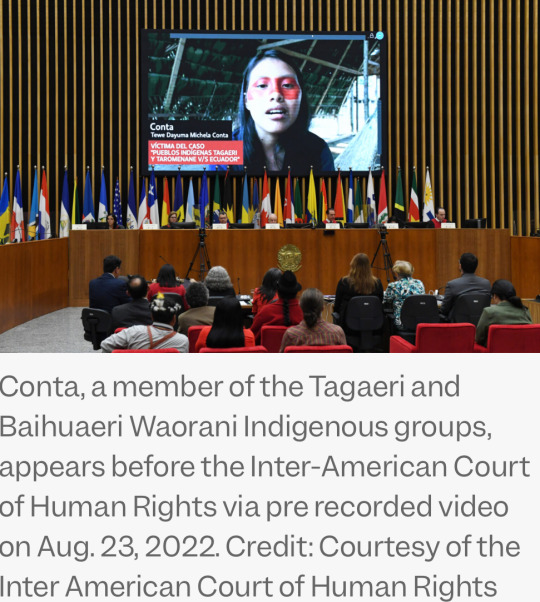
“[T]he Ecuadorian government [must] ensure any future expansion or renewal of oil operations does not impact Indigenous peoples living in voluntary isolation. [… E]ffective measures must be adopted to prevent serious or irreversible damage, which in this case would be the contact of these isolated populations,” said the opinion[….]”
3. America's clean-energy industry is growing despite Trump's attacks. At least for now

“The buildout of big solar and battery plants is expected to hit an all-time high in 2025, accounting for 81% of new power generation[….] The industry overall has boomed thanks to falling technology costs, federal tax incentives and state renewable-energy mandates.”
4. Study says endangered Asian elephant population in Cambodia is more robust than previously thought
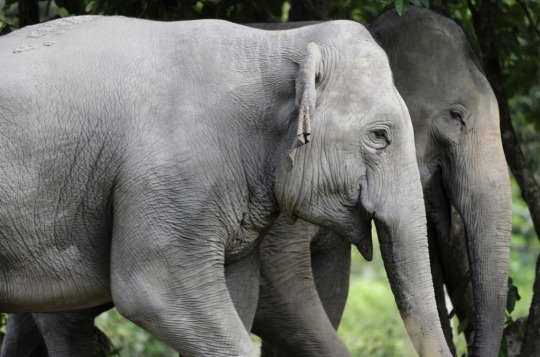
“A genetic study of Asian elephants […] reveals a larger and more robust population than previously thought, raising hopes the endangered species could slowly recover. […] “With sufficient suitable habitat remaining in the region, the population has the potential to grow if properly protected,” the report concludes.”
5. Scientists are engineering a sense of touch for people who are paralyzed
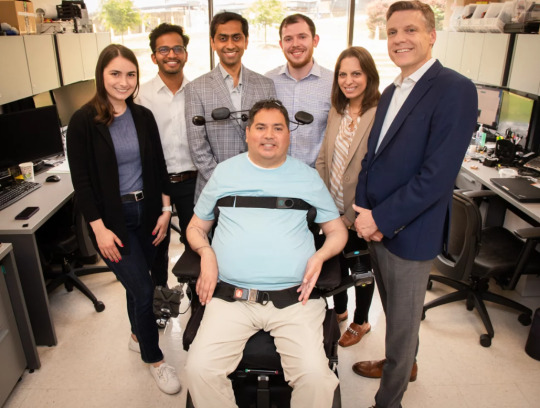
“[Engineers are] testing a system that can restore both movement and sensation in a paralyzed hand. [… A]fter more than a year of therapy and spinal stimulation, [… h]is increased strength and mobility allow him to do things like pet his dog. And when he does, he says, "I can feel a little bit of the fur."“
6. Florida is now a solar superpower. Here’s how it happened.
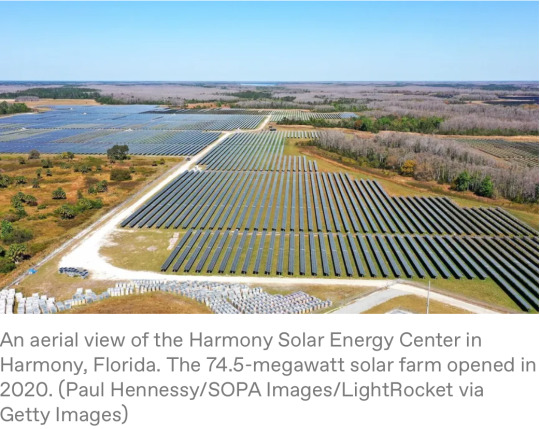
“In a first, Florida vaulted past California last year in terms of new utility-scale solar capacity plugged into its grid. It built 3 gigawatts of large-scale solar in 2024, making it second only to Texas. And in the residential solar sector, Florida continued its longtime leadership streak.”
7. Rare frog rediscovered after 130 years
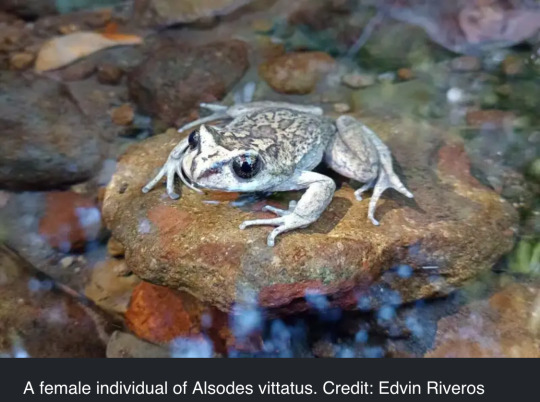
“The researchers discovered two populations of the frog[….] "The rediscovery of A. vittatus allowed us to obtain, more than a century after its description, the first biological and ecological data on the species.” [… S]hedding light on where and how they live is the first step in protecting them.”
8. Community composting programs show promise in reducing household food waste

“The program [increased awareness and reduced household waste, and] also addressed common barriers to home composting, including pest concerns and technical challenges that had previously discouraged participants from composting independently.”
9. Pioneering Australian company marks new milestone on “mission” to upcycle end-of-life solar panels
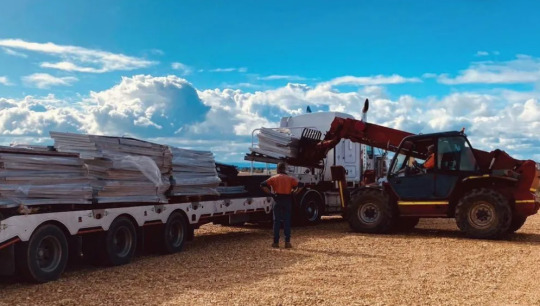
“[…] SolarCrete – a pre-mixed concrete made using glass recovered from used solar panels – will form part of the feasibility study[….] A second stage would then focus on the extraction of high value materials[…] for re-use in PV and battery grade silicon, [… and] electrical appliances[….]”
10. Beavers Just Saved The Czech Government Big Bucks
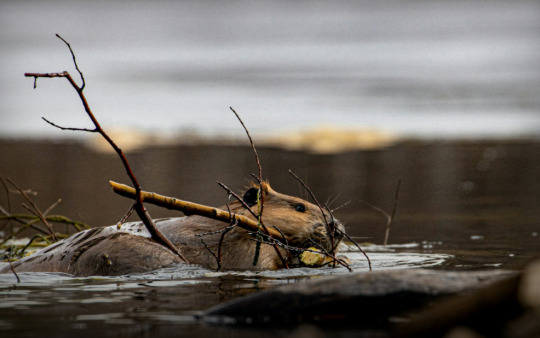
“The aim was to build a dam to prevent sediment and acidic water from two nearby ponds from spilling over, but the project was delayed for years due to negotiations over land use[….] Not only did the industrious rodents complete the work faster than the humans had intended, they also doubled the size of the wetland area that was initially planned.”
March 1-7 news here | (all credit for images and written material can be found at the source linked; I don’t claim credit for anything but curating.)
#hopepunk#good news#shark#fishing#nature#ecuador#first nations#oil drilling#clean energy#solar energy#solar power#elephants#elephant#conservation#animals#science#medicine#paralyzed#florida#solar panels#frogs#endangered species#endangered#compost#community#australia#recycling#beaver#habitat restoration#beaver dam
142 notes
·
View notes
Text
A Blessing or A Curse?
Jing Yuan | M. Reader as Baizhu [Genshin Impact]
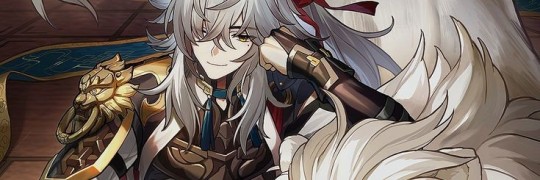
----------
"The doctor will see you now~"
----------
For centuries, immortality has been seen as a curse by the Xianzhou natives. An abomination.
How could they not? When they saw it with their own eyes, what immortality had brought to those who wished for it. How it changed them. Twist their minds until they're merely a shadow of their former self. What had become of those who got Mara-struck.
But...
Amongst those who look down on immortality with disdain. There's one who sees immortality as a blessing rather than a curse.
.
.
.
.
.
Hey, have you heard? There's a Doctor that could cure any illness! It's like a miracle! He works in a Pharmacy in the Alchemy Commission called, Bubu Pharmacy. The Doctor's name is—
"Doctor [Name]?"
"This new prescription, though not as fast-acting. Will allow gradual recovery and build-up of strength making it well suited to someone who's been suffering from a long illness. The needed ingredients can also be found around the Exalting Sanctum."
"Thank you, Doctor!"
The man thanked the doctor for the new prescription with a smile on hie face. The previous prescription used ingredients are hard to get in the district and now with the new prescription, finding the ingredients for the medicine would be a lot more easier.
He then left the pharmacy with the prescription in hand, leaving the doctor alone with his...
Snake.
"You actually found replacements for those ingredients." She says as she watched the man leave. "Of course, what kind of Doctor would I be if I couldn't?" He replied softly, his eyes scanning the documents in his hand.
----------
One day, Doctor [Name] have an unexpected visit.
"Ah, General! To what do I owe the honor of your visit? Are you perhaps injured?" The doctor greeted him with a faint smile on his face. Jing Yuan laugh at [Name]'s words. "No, Doctor. I'm perfectly healthy."
"That's good to hear." "He better be, or else our work would have been for nothing!!"
"Good to see you too Changsheng." The General chuckles. The snake huffs as she rested her body around [Name]'s shoulders. The two old friends sat at a nearby table, chatting away and catching up with one another.
For as long as he could remember, [Name] had always been a kind soul, ready to help at any given time despite being a short-life species. That didn't concern him at all as he studies medicine and the art of healing.
The day [Name] retuned with a white snake around his shoulder was the day that changed everything. For the Luofu and for his friends. Almost like a miracle, the people began to heal ad recover in a rapid pace. Thanks to the Doctor's treatment. They've began to wonder as to how that could be? A short-life species? Having an ability akin to a Vidyadhara? Impossible! And yet..
As [Name] continues to heal and treat his patients... the sicker he became..
It wasn't that it's noticeable, no.. far from it..
He appears as healthy as ever, although a few coughs and wheeze here and there but as an old friend of his, Jing Yuan can't help but show concern for the Doctor.
.
.
.
.
.
"Life, death... and the world around us all follow a set of laws... Hehe, but if you never test the limits, how can anyone know where the boundaries of these laws are?"
He should have known..
He should have known that.. his friend was..
..Researching on something forbidden..
How could this be...?
A kind and gentle man.. wanting nothing but to help and treat others.. began searching for the thing his motherland sought to destroy..? And he's been doing this from the starts..?
Why..? Why must he..
He felt betrayed. Betrayed by an old friend.
Immortality is a curse! Can't the Doctor see that! All of those soldiers, all of those people that were lost from it! Is he blind!! Why!? Why must he search for such abomination!!
And yet.. and yet...
His reason.. the Doctor's reason... [Name]'s reason...
..It's still pure..
He wanted to help.. to treat and heal others..
Changsheng.. her ability to heal is simply out of this world.. but the price.. the price that needs to be paid to do such an act.. isn't that just prove how terrible the power of Abundance is? And yet..
[Name] saw this as a blessing.
It's a gift.
A gift he'll accept with open arms.
Once he received immortality.. he could continue on to help others and.. he won't have to pass down the contract to anyone ever again..
His objective is simple...
To prevent suffering.
But.. is immortality truly the only way? To him, yes. As it would prevent any more people from dying young thanks to the contract. But to someone like Jing Yuan? The General of the Luofu? The man who had seen what immortality had done to others?
Is Immortality a blessing..? Or.. a curse..?
He doesn't know anymore.
#seme male reader#top male reader#x male reader#hsr#hsr x male reader#hsr x reader#honkai star rail#honkai star rail x male reader#honkai star rail x reader#hsr jing yuan#jing yuan#jing yuan x reader#jing yuan x male reader#baizhu#genshin baizhu#genshin impact#genshin#x reader
960 notes
·
View notes
Text
Paddock Confidential - Chapter 11: Drive Fast, Don't Crash



Pairing:
Oliver "Ollie" Bearman x Lira Räikkönen (Original Female Character )
Minor background pairings reflecting the real-life F1 grid (e.g., Charles Leclerc/Alexandra Saint Mleux)
Summary:
Rising F1 star Ollie Bearman navigates the intense pressure of his rookie season with Haas, juggling demanding team expectations and his close ties to Ferrari under the watchful eye of Fred Vasseur. His biggest challenge lies off-track: guarding his relationship with the enigmatic and fiercely private Lira, whose surprising motorsport knowledge and aversion to the spotlight hint at a complex past connected to one of the sport's icons. As Ollie fights for his future, their secret world threatens to unravel amidst paddock gossip, rivalries, and the ever-present Drive to Survive cameras. When exposure becomes inevitable, they must confront the consequences and find a way to navigate the relentless glare of the F1 world together.
Warnings and Notes:
Warnings: Depictions of anxiety, stress related to high-pressure environments (F1), mentions of past trauma (related to privacy/media intrusion), media scrutiny/harassment, potential minor F1-typical language.
Notes:
This is a work of fiction using real people (F1 drivers, personnel) as characters; their portrayals, actions, and relationships are fictionalized for the story.
The brief, quiet interlude in the Cotswolds felt like a lifetime ago, a half-remembered dream snatched between the relentless demands of reality. Late 2024 bled into early 2025, marked not by changing seasons in the traditional sense, but by the escalating rhythm of Formula 1’s pre-season preparations. For Ollie Bearman, newly confirmed (though not yet publicly announced) Haas F1 driver, life transformed into an intense, demanding cycle of forging himself into the athlete and technician required to survive, let alone succeed, at the pinnacle of motorsport.
The Haas factory in Banbury lacked the mythical aura and historical weight of Maranello, or even the familiar, almost familial atmosphere of the Prema workshops. It was a more functional, pragmatic space – a modern industrial unit filled with the hum of machinery, the scent of carbon fibre dust and epoxy resin, and the focused energy of engineers hunched over CAD screens or assembling intricate car components. Yet, walking through its doors for the first time wearing provisional Haas team kit felt momentous, solidifying the transition from hopeful junior to fully-fledged F1 driver. This was his new home, his new team.
Ollie threw himself into the preparations with a ferocity born of ambition and a healthy dose of fear. The physical training regime ramped up to brutal levels. He found himself strapped into contraptions that looked like medieval torture devices, designed solely to strengthen the neck muscles needed to withstand the savage G-forces of an F1 car. Sweat dripped into his eyes, his muscles screamed under the strain as he fought against the resistance bands, his trainer, Eoin, calling out relentless encouragement. "Hold it, Ollie! Five more seconds! Feel the burn! That's what keeps your head on straight through Eau Rouge!"
Lira often sat quietly in the corner of the private gym during these sessions, tablet in hand, ostensibly reading but her eyes frequently flicking up to observe. She tracked his reps with the stopwatch app on her phone, her expression unreadable, but when Eoin finally called time on a particularly punishing set of neck extensions, Ollie caught her subtle, sharp nod of approval as he collapsed back against the bench, gasping. As Eoin moved away to adjust another machine, Lira would appear silently beside Ollie, handing him a precisely measured recovery shake she’d prepared earlier, the ingredients meticulously chosen based on nutritional research papers she’d been studying. "Drink," she'd murmur, her voice low, before retreating back to her corner. No fuss, no effusive praise, just quiet, practical support that felt more grounding than any cheerleading could. Her analytical mind had latched onto sports science, ensuring his nutrition precisely matched the extreme demands of the training.
Evenings often found Ollie sprawled face-down on his apartment sofa, every muscle fibre seemingly protesting, the sheer physical toll of the day rendering him almost immobile. The scent of deep heat rub often filled the air. Lira would move quietly around the room, sometimes bringing him a glass of water or simply sitting nearby, reading. On particularly brutal days, she'd wordlessly retrieve ice packs from the freezer, wrapping them in towels and placing them gently on his aching shoulders or strained neck muscles. Occasionally, if he groaned particularly loudly while trying to stretch out a cramp, she might put her book down and, with surprising strength in her slender fingers, begin kneading the tense, knotted muscles in his shoulders and upper back, her touch firm and methodical, working out the soreness without needing to be asked. Her quiet care was a silent acknowledgment of the physical price he was paying, a balm to his exhaustion. He knew, viscerally now, that F1 wasn't just about speed; it demanded relentless physical endurance.
Then there were the endless hours logged in the simulator. Haas’s sim setup was a sophisticated beast, a dark, womb-like room dominated by a carbon fibre monocoque surrounded by panoramic screens, capable of replicating the bumps, kerbs, and G-forces of every track on the calendar with startling fidelity. Strapped into the tight cockpit, facing the complex Haas steering wheel – different again from Ferrari’s, requiring new muscle memory for button placement and rotary functions – Ollie drove lap after virtual lap. Learning the nuances of the 2025 Haas car, understanding its theoretical handling characteristics, practicing fuel saving techniques, ERS deployment strategies, qualifying runs, race starts, pit stop procedures. He worked closely with his new race engineer, Mark, and the performance engineers, dissecting telemetry, overlaying his laps with data from the team’s existing drivers, searching for those elusive tenths of a second. It was mentally exhausting work, requiring intense concentration for hours on end, often leaving him feeling more drained than a real track session.
Factory visits became routine. Seat fittings involved multiple sessions, meticulously moulding the carbon fibre seat to his exact contours for optimal comfort, safety, and connection to the car. He spent hours in engineering meetings, trying to absorb the technical jargon, learning about the team’s development philosophy, understanding the intricate workings of the power unit, the suspension geometry, the aerodynamic concepts. He met his mechanics, the engineers who would be his trackside family, shaking hands, learning names, trying to build the rapport and trust essential for a successful working relationship. It was a steep learning curve, a constant influx of new information, new faces, new procedures.
Through it all, Lira was a quiet, constant presence in the background. She understood his need for absolute focus, the immense demands of this preparatory phase. She didn't accompany him on every factory visit – that would be too risky – but occasionally, when the purpose was less formal, perhaps a simulator debrief or a casual engineering discussion, she would come along, melting into the background with practiced ease. Dressed in her usual understated dark clothing, she’d find a quiet corner, ostensibly reading or working on her own research on a tablet, attracting minimal attention.
Yet, her presence wasn't merely passive support. Ollie quickly learned that her quiet observations often held surprising technical value.
During one particularly frustrating simulator session where Ollie was struggling to get the virtual Haas car to rotate cleanly through the slow corners of a simulated Bahrain circuit, complaining over the radio about persistent understeer on entry, Lira, who had been watching the telemetry feed over a performance engineer’s shoulder for half an hour, offered a quiet suggestion during a break while Ollie stretched beside the rig.
"The rear feels lazy on entry at Turn 5 sim, Ollie," she murmured, her voice low but clear in the relative quiet of the control room, pointing subtly at a specific data trace on the monitor displaying differential slip percentages. "Looks like it's under-rotating mid-corner, forcing you to wait too long to get back on throttle. Have you tried adjusting the differential ramp settings? Maybe less locking on entry could help the car turn in more sharply? The data trace here suggests the diff isn't allowing enough rotation early enough."
Ollie stared at her, momentarily frozen. Pride swelled in him at her sharp insight, but it was immediately swamped by a cold wave of panic.
Too specific. Too technical.
Mark, his experienced race engineer, looked up from his own screen, frowning slightly, not in disagreement, but in surprise. Dave, one of the younger performance engineers Lira had been standing near, visibly raised his eyebrows, leaning closer to the screen Lira had indicated, comparing it with Ollie's feedback notes.
"She's right, actually," Dave murmured, tracing the graph with his finger. "The entry diff lock does look quite high compared to the baseline setup we started with. We were focusing on the aero balance changes, didn't revisit the diff map after the last wing adjustment."
Mark nodded slowly, his gaze shifting from the screen to Lira, a flicker of curiosity in his eyes. "It's a valid point. The understeer Ollie's feeling could well be exacerbated by the diff resisting rotation on turn-in, especially with the front wing change we made." He looked back at Lira, a hint of professional respect entering his tone. "Good spot… Lira, wasn't it?"
Ollie jumped in quickly, forcing a casual, slightly louder laugh, trying to diffuse the sudden focus on her. "Blimey, Li, you listening in? Must be all my moaning about the front end finally sinking in! Or maybe she's just got a secret knack for spotting dodgy diff settings." He clapped Mark on the shoulder, turning the engineer physically back towards the controls. "Anyway! So, reckon we try a sim run with a more aggressive diff setting on entry for the next stint? Less locking?" He deliberately steered the conversation back to the technical solution, away from the person who suggested it.
Mark nodded, already tapping adjustments into the simulator controls. "Yeah, let's try it. Easy change to make. Worth a shot." He shot another quick, thoughtful glance towards Lira, who had already retreated slightly, picking up her tablet again as if the conversation no longer involved her, her expression carefully neutral.
Lira simply gave a small, almost imperceptible shrug, her eyes already scanning whatever research was on her screen, leaving Ollie with a familiar, potent cocktail of emotions: immense pride in her brilliance, deep gratitude for her support, and a renewed, heart-thumping jolt of anxiety about how easily her unique knowledge, her ingrained understanding of racing dynamics, could betray her carefully constructed cover.
Her insight was invaluable, a secret weapon in his arsenal, but every time she deployed it, even subtly, it felt like playing with fire, a constant, nerve-wracking reminder of the tightrope they walked.
The slightly increased curiosity in the engineers' eyes lingered for the rest of the afternoon, a silent question mark hanging over the quiet, unassuming 'researcher' in the corner.
As the weeks turned into months, and the start of pre-season testing loomed closer, the conversation Ollie had been dreading, yet knew was essential, finally took place. They needed to establish the rules, the hard boundaries, for Lira’s presence – or mostly, her absence – during the actual F1 season.
They sat opposite each other at the small dining table in Ollie’s apartment, mugs of tea growing cold between them, the mood serious, pragmatic.
"Okay," Ollie began, taking a deep breath. "2025. Paddock access. We need to be absolutely clear."
Lira nodded, her expression composed, analytical. "Agreed. Minimal attendance is the baseline. Only races where it makes logistical sense, where my presence can be genuinely low-key."
"Guest passes only," Ollie confirmed. "Never team passes. And obtained through Tim or someone completely unconnected to Haas or Ferrari, maybe using one of your university contacts?"
"Yes. Untraceable back to you or the team," Lira agreed. "And absolutely zero presence in Haas hospitality or the garage during official sessions. Ever. That’s non-negotiable."
"Definitely," Ollie shuddered at the thought of the scrutiny within the team environment. "Maybe find a quiet spot in the Paddock Club if absolutely necessary, using a sponsor pass from a neutral company? Somewhere anonymous?"
"Possibly. But avoiding the main hospitality hotspots is crucial," Lira stressed. "No lingering near the Ferrari or Mercedes areas either, obviously. Too many people know faces there."
"No official team photos, no appearances in any team communications, social media, anything," Ollie added, ticking off points on his fingers. "If a camera crew approaches, you walk the other way. Immediately."
"Always have an exit strategy," Lira continued the grim checklist. "Know the quickest routes out of the paddock, the service roads, the discreet exits. Never get cornered."
"And if someone does recognize you? Someone from the past?" Ollie asked, the fear resurfacing.
Lira’s gaze was steady. "Polite, brief acknowledgment if unavoidable. Then move on. Feign poor memory if necessary. Create distance. Never engage in prolonged conversation."
They sat in silence for a moment, the weight of the restrictions, the sheer complexity of the deception required, settling heavily between them. It felt cold, clinical, stripping away any romance, reducing their relationship to a series of logistical challenges and risk assessments.
Ollie reached across the table, covering her hand with his. "Li, are you sure… are you sure you want this? Living like a ghost? It’s not fair."
Her fingers curled around his, her touch firm. "It's not about fairness, Ollie. It's about necessity. It's the price of… this." She gestured vaguely, encompassing his F1 career, their relationship, the whole complicated mess. "We knew the price. And yes," her voice softened slightly, her grey eyes meeting his with unwavering resolve, "I'm sure. I want this. With you. Whatever it takes."
Her certainty, her willingness to endure this hidden existence for him, for them, filled Ollie with a fierce mix of love and guilt. He squeezed her hand tightly, his own resolve hardening. He would make this work. He would protect her. He had to.
A few weeks before they were due to fly out for the official car launch and then pre-season testing in Bahrain, another unexpected communication arrived from the Räikkönen sphere. Lira was on a brief video call with her mother, Minttu, catching up, when Minttu casually mentioned Kimi was nearby and wanted a quick word with Ollie.
Ollie, hastily summoned to the laptop, felt a familiar jolt of nervous energy. Interactions with the Iceman were rare and always unpredictable. Kimi’s face appeared on screen, looking typically impassive, perhaps slightly bored, framed against what looked like a minimalist, very clean living room somewhere in Switzerland.
"Ollie," Kimi stated, his standard greeting.
"Hi Kimi," Ollie replied, trying to sound relaxed, maybe a bit too cheerful. "Good to see you! All good?"
"Bwoah," Kimi responded noncommittally. A beat of silence stretched, feeling cavernous through the laptop speakers.
Ollie felt the need to fill it instantly.
"So, yeah, just getting ready for Bahrain," Ollie rambled slightly, nerves making him talk faster than usual. "Lots of sim work, seat fitting went well, feeling pretty good actually, bit nervous obviously, big step up, but the team at Haas seem great, really welcoming, Mark's brilliant, loads to learn..." He trailed off, realizing he was babbling.
He cleared his throat. "Actually, Kimi, speaking of learning, I never properly thanked you for that advice you gave me years ago, back when I was karting? You probably don't even remember, it was ages ago at some random track, but you said something about feeling the grip through your backside? Honestly, it sounds daft, but it properly stuck with me! Made a real difference, understanding how the kart was reacting, you know? So, yeah, just wanted to say thanks for that, finally!" He finished in a rush, feeling slightly breathless.
Kimi blinked slowly, seemingly processing the torrent of words and the ancient memory. "Yeah," he finally conceded after another pause that felt long enough for Ollie to mentally replay his entire rambling speech. "Is important."
Another pause.
Ollie opened his mouth to fill it again, but Kimi spoke first.
"Formula 1. Drive fast." Pause. "Don't crash." Longer pause.
Ollie waited, heart pounding.
"Listen to engineers…" Kimi added, almost as an afterthought, "…sometimes."
Ollie managed a small, slightly shaky smile. Peak Kimi. Utterly terrifying and somehow brilliant. "Right. Good advice. Simple! Drive fast, don't crash. Got it. Thanks, Kimi."
Kimi’s gaze then flickered past Ollie, presumably spotting Lira hovering just out of shot. He gave a barely perceptible nod, a micro-movement almost lost on the screen. Then, turning his flat gaze back to Ollie, he asked, with no change in tone whatsoever,
"You feed her okay?"
Ollie blinked, completely blindsided by the bizarre, almost domestic question.
Feed her?
Was Kimi checking if I'm looking after Lira properly? In the most deadpan, Iceman way possible? "Uh… yes? Yes, Kimi! Absolutely! She eats well, promise! Three square meals a day, plenty of vegetables... well, mostly," Ollie stammered, utterly bewildered and slightly panicked by the question's implications.
"Good," Kimi stated flatly. Before Ollie could respond further, or dig himself into a deeper hole about Lira's eating habits, Kimi simply said, "Okay. Bye," and the screen went blank.
Ollie stared at the blank screen for a full ten seconds, processing the surreal exchange. He slowly turned to Lira, who had stepped back into view, a faint, unmistakable curve of amusement playing on her lips, her grey eyes sparkling with suppressed laughter.
"Did… did your dad just ask if I'm feeding you properly?" Ollie asked incredulously.
Lira’s rare smile widened fractionally. "I believe he did," she confirmed, her voice laced with dry amusement. "Consider it the Räikkönen version of a pre-season blessing. And possibly a subtle threat."
Ollie shook his head, a bewildered laugh escaping him. Kimi Räikkönen. An absolute enigma. Yet, somehow, that strange, blunt, almost paternal query felt oddly reassuring, a bizarre form of acknowledgment, perhaps even approval, filtered through the Iceman’s unique, impenetrable lens. It was another reminder of the extraordinary, complicated, hidden world he was now inextricably part of.
The final days before leaving for Bahrain dissolved into a controlled chaos of logistics and anticipation. Ollie’s apartment became ground zero, looking less like a living space and more like a staging area for a military operation.
Open suitcases gaped like hungry mouths on the floor, surrounded by daunting piles of pristine white and red Haas team kit – polos, jackets, fireproof underwear, travel gear. His race boots stood sentinel beside helmets gleaming under the harsh overhead light. Training gear spilled from another bag, alongside chargers, adapters, notebooks filled with hastily scribbled notes from engineering meetings. It was the physical manifestation of his F1 dream, overwhelming in its sheer volume.
Ollie buzzed around the room like a trapped wasp, fuelled by nervous energy and too much caffeine. He'd grab a stack of t-shirts, attempt to fold them, give up halfway through, and shove them haphazardly into a case. He'd check his passport for the tenth time, then immediately forget where he'd put it, patting his pockets frantically.
"Li, have you seen my... oh, wait, here it is." He’d hold up two nearly identical training jackets, frowning. "Which one do you think is better for Bahrain heat? This one's lighter, but this one has more pockets..."
Lira moved through the whirlwind with the serene calm of a seasoned logistics expert navigating a natural disaster. While Ollie created eddies of disorder, she brought quiet efficiency.
She picked up the shirts he’d abandoned, folding them into neat, compact squares before placing them precisely in the suitcase. She located the missing phone charger tucked under a pile of race gloves. Without a word, she held up the lighter of the two jackets Ollie was debating. "This one," she stated simply. "Pockets are overrated when it's forty degrees Celsius." She systematically worked through his packing list, ticking items off on her tablet, ensuring essentials like his specific electrolyte tablets or noise-cancelling headphones weren't forgotten amidst the branded merchandise.
Her calm presence was the only thing keeping the pre-departure frenzy from escalating into full-blown panic.
She wouldn't be travelling with him for the entirety of testing – the risk of exposure under the new Haas arrangement was deemed too high, too soon – but she would fly out independently for a few days towards the end, slipping into Bahrain under her carefully maintained 'private research' cover story, a brief intersection planned amidst the intense testing schedule.
On the last night, surrounded by the now mostly packed bags zipped shut like sleeping beasts, they stood by the window, looking out at the city lights glittering in the cold night air. A sense of profound transition hung between them. This was it. The end of the preparation, the beginning of the real thing. Ollie’s full-time Formula 1 career. The most intense, most public, most demanding phase yet of guarding their precarious secret.
Ollie felt a potent mix of raw excitement – the thrill of the unknown, the chance to prove himself on the biggest stage – and a deep, gnawing trepidation. Could he handle the pressure? Could he perform in the Haas? Could they maintain their secret under the relentless scrutiny of a full F1 season? He slipped an arm around Lira’s waist, pulling her close, resting his chin on the top of her head.
"Ready for this?" he murmured, the question directed as much at himself as at her.
Lira leaned back against him, her gaze fixed on the distant lights. "As ready as we can be," she replied softly, her voice steady.
"Helmet on, Ollie. Eyes forward. Focus on the first corner."
He smiled faintly, recognizing her adaptation of racing advice to their situation. She was right. All the worry, all the 'what ifs,' wouldn't change anything now. It was time to drive. Time to face the storm. Together. He tightened his grip around her, feeling the familiar anchor of her presence, and took a deep breath, bracing himself for the plunge into the exhilarating, terrifying unknown of the Formula 1 circus.
Bahrain, and the future, awaited.
Masterlist | Previous chapter | Next chapter
#oliver bearman#f1 x reader#formula 1 x reader#ollie bearman x reader#f1 fanfic#ollie bearman x oc#f1 x oc#oliver bearman x oc#formula 1#ob87#Paddock Confidential
57 notes
·
View notes
Text
also preserved on our archive
by Rowan Walrath
Public and private funding is lacking, scrambling opportunities to develop treatments
In brief Long COVID is a difficult therapeutic area to work in. It’s a scientifically challenging condition, but perhaps more critically, few want to fund new treatments. Private investors, Big Pharma, and government agencies alike see long COVID as too risky as long as its underlying mechanisms are so poorly understood. This dynamic has hampered the few biotechnology and pharmaceutical companies trying to develop new medicines. The lack of funding has frustrated people with long COVID, who have few options available to them. And crucially, it has snarled research and development, cutting drug development short.
When COVID-19 hit, the biotechnology company Aim ImmunoTech was developing a drug for myalgic encephalomyelitis/chronic fatigue syndrome, better known as ME/CFS. As more people came down with COVID-19, some began to describe lingering problems that sounded a lot like ME/CFS. In many cases, people who got sick simply never seemed to get better. In others, they recovered completely—or thought they had—only to be waylaid by new problems: fatigue that wouldn’t go away with any amount of rest, brain fog that got in the way of normal conversations, a sudden tendency toward dizziness and fainting, or all the above.
There was a clear overlap between the condition, which patients began calling long COVID, and ME/CFS. People with ME/CFS have a deep, debilitating fatigue. They cannot tolerate much, if any, exercise; walking up a slight incline can mean days of recovery. Those with the most severe cases are bedbound.
Aim’s leaders set out to test whether the company’s drug, Ampligen, which is approved for ME/CFS in Argentina but not yet in the US, might be a good fit for treating long COVID. They started with a tiny study, just 4 people. When most of those participants responded well, they scaled up to 80. While initial data were mixed, people taking Ampligen were generally able to walk farther in a 6 min walk test than those who took a placebo, indicating improvement in baseline fatigue. The company is now making plans for a follow-on study in long COVID.
Aim’s motivation for testing Ampligen in long COVID was twofold. Executives believed they could help people with the condition, given the significant overlap in symptoms with ME/CFS. But they also, plainly, thought there’d be money. They were wrong.
“When we first went out to do this study in long COVID, there was money from . . . RECOVER,” Aim scientific officer Chris McAleer says, referring to Researching COVID to Enhance Recovery (RECOVER), the National Institutes of Health’s $1.7 billion initiative to fund projects investigating causes of, and potential treatments for, long COVID. McAleer says Aim attempted to get RECOVER funds, “believing that we had a therapeutic for these individuals, and we get nothing.”
Instead of funding novel medicines like Ampligen, the NIH has directed most of its RECOVER resources to observational studies designed to learn more about the condition, not treat it. Only last year did the agency begin to fund clinical trials for long COVID treatments, and those investigate the repurposing of approved drugs. What RECOVER is not doing is funding new compounds.
RECOVER is the only federal funding mechanism aimed at long COVID research. Other initiatives, like the $5 billion Project NextGen and the $577 million Antiviral Drug Discovery (AViDD) Centers for Pathogens of Pandemic Concern, put grant money toward next-generation vaccines, monoclonal antibodies, and antivirals for COVID-19. They stop short of testing those compounds as long COVID treatments.
Private funding is even harder to come by. Large pharmaceutical companies have mostly stayed away from the condition. (Some RECOVER trials are testing Pfizer’s COVID-19 antiviral Paxlovid, but a Pfizer spokesperson confirms that Pfizer is not sponsoring those studies.) Most investors have also avoided long COVID: a senior analyst on PitchBook’s biotech team, which tracks industry financing closely, says he isn’t aware of any investment in the space.
“What you need is innovation on this front that’s not driven by profit motive, but impact on global human health,” says Sumit Chanda, an immunologist and microbiologist at Scripps Research who coleads one of the AViDD centers. “We could have been filling in the gaps for things like long COVID, where pharma doesn’t see that there’s a billion-dollar market.”
The few biotech companies that are developing potential treatments for long COVID, including Aim, are usually funding those efforts out of their own balance sheets. Experts warn that such a pattern is not sustainable. At least four companies that were developing long COVID treatments have shut down because of an apparent lack of finances. Others are evaluating a shift away from long COVID.
“It is seen by the industry and by investors as a shot in the dark,” says Radu Pislariu, cofounder and CEO of Laurent Pharmaceuticals, a start-up that’s developing an antiviral and anti-inflammatory for long COVID. “What I know is that nobody wants to hear about COVID. When you say the name COVID, it’s bad . . ., but long COVID is not going anywhere, because COVID-19 is endemic. It will stay. At some point, everyone will realize that we have to do more for it.”
‘Time and patience and money’ Much of the hesitancy to make new medicines stems from the evasive nature of long COVID itself. The condition is multisystemic, affecting the brain, heart, endocrine network, immune system, reproductive organs, and gastrointestinal tract. While researchers are finding increasing evidence for some of the disease’s mechanisms, like viral persistence, immune dysregulation, and mitochondrial dysfunction, they might not uncover a one-size-fits-all treatment.
“Until we have a better understanding of the underlying mechanisms of long COVID, I think physicians are doing the best they can with the information they have and the guidance that is available to them,” says Ian Simon, director of the US Department of Health and Human Services’ Office of Long COVID Research and Practice. The research taking place now will eventually guide new therapeutic development, he says.
Meanwhile, time marches on.
By the end of 2023, more than 409 million people worldwide had long COVID, according to a recent review coauthored by two cofounders of the Patient-Led Research Collaborative (PLRC) and several prominent long COVID researchers (Nat. Med. 2024; DOI: 10.1038/s41591-024-03173-6). Most of those 409 million contracted COVID-19 and then long COVID after vaccines and antivirals became available. That fact undercuts the notion that the condition results only from severe cases of COVID-19 contracted before those interventions existed. (Vaccination and treatment with antivirals do correlate with a lower incidence of long COVID but don’t prevent it outright.)
“There is that narrative that long COVID is over,” says Hannah Davis, cofounder of the PLRC and a coauthor of the review, who has had long COVID since 2020. “I think that’s fairly obviously not true.”
The few biotech companies that have taken matters into their own hands, like Aim, are often reduced to small study sizes with limited time frames because they can’t get outside funding.
InflammX Therapeutics, a Florida-based ophthalmology firm headed by former Bausch & Lomb executive Brian Levy, started testing an anti-inflammatory drug candidate called Xiflam after Levy’s daughter came down with long COVID. Xiflam is designed to close connexin 43 (Cx43) hemichannels when they become pathological. The hemichannels, which form in cell membranes, would otherwise allow intracellular adenosine triphosphate (ATP) to escape and signal the NLRP3 inflammasome to crank up its activity, causing pain and inflammation.
InflammX originally conceived of Xiflam as a treatment for inflammation in various eye disorders, but after Levy familiarized himself with the literature on long COVID, he figured the compound might be useful for people like his daughter.
InflammX set up a small Phase 2a study at a site just outside Boston. The trial will enroll just 20 participants, including Levy’s daughter and InflammX’s chief operating and financial officer, David Pool, who also has long COVID. The study is set up such that participants don’t know if they’re taking Xiflam or a placebo.
Levy says the company tried to communicate with NIH RECOVER staff multiple times but never heard back. “We couldn’t wait,” he says.
Larger firms are similarly disconnected from US federal efforts. COVID-19 vaccine maker Moderna appointed a vice president of long COVID last year. Bishoy Rizkalla now oversees a small team studying how the company’s messenger RNA shots could mitigate problems caused by new and latent viruses, including SARS-CoV-2. But Rizkalla says Moderna has no federally funded projects in long COVID.
Federal bureaucracy has slowed down research in other ways. When long COVID appeared, Tonix Pharmaceuticals was developing a possible drug called TNX-102 SL to treat fibromyalgia. The two conditions look similar: they’re painful, fatiguing, and multisystemic, and fibromyalgia can crop up after a viral infection.
But it wasn’t easy to design a study to test the compound in long COVID. Among other issues, the US Food and Drug Administration initially insisted that participants have a positive COVID-19 test confirmed by a laboratory, like a polymerase chain reaction test, to be included in the study. At-home diagnostics wouldn’t count.
“We spent a huge amount of money, and we couldn’t enroll people who had lab-confirmed COVID because no one was going to labs to confirm their COVID,” cofounder and CEO Seth Lederman says. “We just ran out of time and patience and money, frankly.”
Tonix had planned to enroll 450 participants. The company ultimately enrolled only 63. The study failed to meet its primary end point of reducing pain intensity, a result Lederman attributes to the smaller-than-expected sample size.
TNX-102 SL trended toward improvements in fatigue and other areas, like sleep quality and cognitive function, but Tonix is moving away from developing the compound as a long COVID treatment and focusing on developing it for fibromyalgia. If it’s approved, Lederman hopes that physicians will prescribe it to people who meet the clinical criteria for fibromyalgia regardless of whether their condition stems from COVID-19.
“I’m not saying we’re not going to do another study in long COVID, but for the short term, it’s deemphasized,” Lederman says.
Abandoned attempts Without more public or private investment, it’s unclear how research can proceed. The small corner of the private sector that has endeavored to take on long COVID is slowly becoming a graveyard.
Axcella Therapeutics made a big gamble in late 2022. The company pivoted from trying to treat nonalcoholic steatohepatitis, a liver disease, to addressing chronic fatigue in people with long COVID. In doing so, Axcella reoriented itself exclusively around long COVID, laying off most of its staff and abandoning other research activities. People in a 41-person Phase 2a trial of the drug candidate, AXA1125, showed improvement in fatigue scores based on a clinical questionnaire (eClinicalMedicine 2023, DOI: 10.1016/j.eclinm.2023.101946), but Axcella shut down before it could get its planned 300-person follow-on study up and running.
The fate of AXA1125 may be to gather dust. Axcella’s former executives have moved on to other pursuits. Erstwhile chief medical officer Margaret Koziel, once a champion of AXA1125, says by email that she is “not up to date on current research on long COVID.” Staff at the University of Oxford, which ran the Phase 2a study, were not able to procure information about the planned Phase 2b/3 trial. A spokesperson for Flagship Pioneering, the venture firm that founded Axcella in 2011, declined to comment to C&EN.
Other firms have met similar ends. Ampio Pharmaceuticals dissolved in August after completing only a Phase 1 study to evaluate an inhaled medication called Ampion in people with long COVID who have breathing issues. Biotech firm SolAeroMed shut down before even starting a trial of its bronchodilating medicine for people with long COVID. “Unfortunately we were unable to attract funding to support our clinical work for COVID,” CEO John Dennis says by email.
Another biotech company, Aerium Therapeutics, did manage to get just enough of its monoclonal antibody AER002 manufactured and in the hands of researchers at the University of California, San Francisco, before it ended operations. The researchers are now testing AER002 in a Phase 2 trial with people with long COVID. Michael Peluso, an infectious disease clinician and researcher at UCSF and principal investigator of the trial, says that while AER002 may not advance without a company behind it, the study could be valuable for validating long COVID’s mechanisms of disease and providing a proof of concept for monoclonal antibody treatment more generally.
“[Aerium] put a lot of effort into making sure that the study would not be impacted,” Peluso says. “Regardless of the results of this study, doing a follow-up study now that we’ve kind of learned the mechanics of it with modern monoclonals would be really, really interesting.”
‘A squandered opportunity’ In 2022, the NIH’s National Institute of Allergy and Infectious Diseases (NIAID) put about $577 million toward nine research centers that would discover and develop antivirals for various pathogens. Called the Antiviral Drug Discovery (AViDD) Centers for Pathogens of Pandemic Concern, the centers were initially imagined as 5-year projects, enough time to ready multiple candidates for preclinical development. The NIH allocated money for the first 3 years and promised more funds to come later.
The prospect excited John Chodera, a computational chemist at the Memorial Sloan Kettering Cancer Center and a principal investigator at an AViDD center called the AI-Driven Structure-Enabled Antiviral Platform. Chodera figured that if his team were able to develop a potent antiviral for SARS-CoV-2, it could potentially be used to treat long COVID as well. A predominant theory is that reservoirs of hidden virus in the body cause ongoing symptoms.
But Chodera says NIAID told him and other AViDD investigators that establishing long COVID models was out of scope. And last year, Congress clawed back unspent COVID-19 pandemic relief funds, including the pool of money intended for the AViDD centers’ last 2 years. Lawmakers were supposed to come through with additional funding, Chodera says, but it never materialized. All nine AViDD centers will run out of money come May 2025.
“When we do start to understand what the molecular targets for long COVID are going to be, it’d be very easy to pivot and train our fire on those targets,” says Chanda from Scripps’s AViDD center. “The problem is that it took us probably 2 years to get everything up and going. If you cut the funding after 3 years, we basically have to dismantle it. We don’t have an opportunity to say, ‘Hey, look, this is what we’ve done. We can now take this and train our fire on X, Y, and Z.’ ”
Researchers at multiple AViDD centers confirm that the NIH has offered a 1-year, no-cost extension, but it doesn’t come with additional funds. They now find themselves in the same position as many academic labs: seeking grant money to keep their projects going.
Worse, they say, is that applying for other grants will likely mean splitting up research teams, thus undoing the network effect that these centers were supposed to provide.
“Now what we’ve got is a bunch of half bridges with nowhere to fund the continuation of that work,” says Nathaniel Moorman, cofounder and scientific adviser of the Rapidly Emerging Antiviral Drug Development Initiative, which houses an AViDD center at the University of North Carolina at Chapel Hill.
“This was a squandered opportunity, not just for pandemic preparedness but to tackle these unmet needs that are being neglected by biotech and pharma,” Chanda says.
Viral persistence Ann Kwong has been here before. The virologist was among the first industry scientists trying to develop antivirals for hepatitis C virus (HCV) back in the 1990s. Kwong led an antiviral discovery team at the Schering-Plough Research Institute for 6 years. In 1997, Vertex Pharmaceuticals recruited her to lead its new virology group.
Kwong and her team at Vertex developed a number of antivirals for HCV, HIV, and influenza viruses; one was the HCV protease inhibitor telaprevir. She recalls that a major challenge for the HCV antivirals was that scientists didn’t know where in the body the virus was hiding. Kwong says she had to fight to develop an antiviral that targeted the liver since it hadn’t yet been confirmed that HCV primarily resides there. People with chronic hepatitis C would in many cases eventually develop liver failure or cancer, but they presented with other issues too, like brain fog, fatigue, and inflammation.
She sees the same dynamic playing out in long COVID.
“This reminds me of HIV days and HCV days,” Kwong says. “This idea that pharma doesn’t want to work on this because we don’t know things about SARS-CoV-2 and long COVID is bullshit.”
Since January, Kwong has been cooking up something new. She’s approaching long COVID the way she did chronic hepatitis C: treating it as a chronic infection, through a start-up called Persistence Bio. Persistence is still in stealth; its name reflects its mission to create antivirals that can reach hidden reservoirs of persistent SARS-CoV-2, which many researchers believe to be a cause of long COVID.
“Long COVID is really interesting because there’s so many different symptoms,” Kwong says. “As a virologist, I am not surprised, because it’s an amazing virus. It infects every tissue in your body. . . . All the autopsy studies show that it’s in your brain. It’s in your gut. It’s in your lungs. It’s in your heart. To me, all the different symptoms are indicative of where the virus has gone when it infected you.”
Kwong has experienced some of these symptoms firsthand. She contracted COVID-19 while flying home to Massachusetts from Germany in 2020. For about a year afterward, she’d get caught off guard by sudden bouts of fatigue, bending over to catch her breath as she walked around the horse farm where she lives, her legs aching. Those symptoms went away with time and luck, but another round of symptoms roared to life this spring, including what Kwong describes as “partial blackouts.”
Kwong hasn’t been formally diagnosed with long COVID, but she says she “strongly suspects” she has it. Others among Persistence’s team of about 25 also have the condition.
“Long COVID patients have been involved with the founding of our company, and we work closely with them and know how awful the condition can be,” Kwong says. “It is a big motivator for our team.”
Persistence is in the process of fundraising. Kwong says she’s in conversations with private investors, but she and her cofounders are hoping to get public funding too.
On Sept. 23, the NIH is convening a 3-day workshop to review what RECOVER has accomplished and plan the next phase of the initiative. Crucially, that phase will include additional clinical trials. RECOVER’s $1.7 billion in funding includes a recent award of $515 million over the next 4 years. It’s not out of the question that this time, industry players might be invited to the table. Tonix Pharmaceuticals’ Lederman and Aim ImmunoTech’s McAleer will both speak during the workshop.
The US Senate Committee on Appropriations explicitly directed the NIH during an Aug. 1 meeting to prioritize research to understand, diagnose, and treat long COVID. It also recommended that Congress put $1.5 billion toward the Advanced Research Projects Agency for Health (ARPA-H), which often partners with industry players. The committee instructed ARPA-H to invest in “high-risk, high-reward research . . . focused on drug trials, development of biomarkers, and research that includes long COVID associated conditions.” Also last month, Sen. Bernie Sanders (I-VT) introduced the Long COVID Research Moonshot Act, which would give the NIH $1 billion a year for a decade to treat and monitor patients.
It’s these kinds of mechanisms that might make a difference for long COVID drug development.
“What I’ve seen a lot is pharma being hesitant to get involved,” says Lisa McCorkell, a cofounder of the PLRC and a coauthor of the recent long COVID review. “Maybe they’ll invest if NIH also matches their investment or something like that. Having those public-private partnerships is really, at this stage, what will propel us forward.”
Chemical & Engineering News ISSN 0009-2347 Copyright © 2024 American Chemical Society
#mask up#covid#pandemic#wear a mask#covid 19#public health#coronavirus#sars cov 2#still coviding#wear a respirator#long covid#covid conscious#covid is not over#wear a fucking mask
149 notes
·
View notes